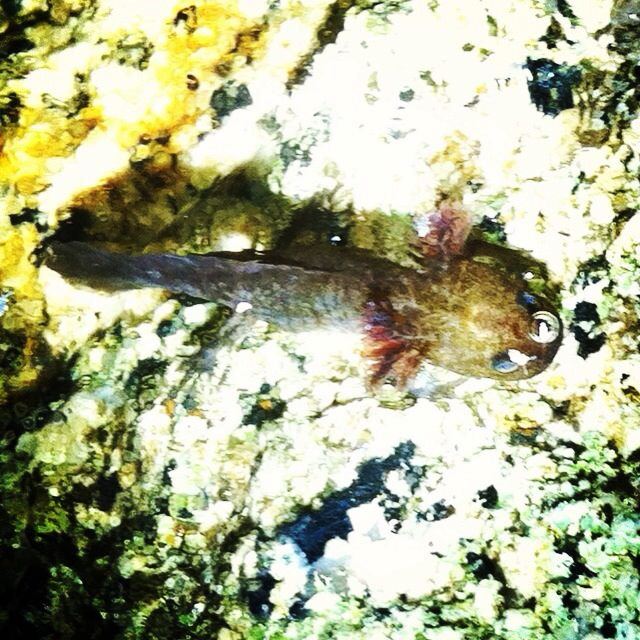 Biologist Nathan Mineo
Biologist Nathan Mineo
Did You Know...?
Spotted Salamander Larvae Overwintering
Written by Nathan Mineo
Reprinted from the 2013 Cape Ann Vernal Pond Team Newsletter
Photograph of Nathan by Cheryl Briscoe
Di
d you know that spotted salamander larvae (Ambystoma maculatum) can overwinter in vernal ponds? Rick and I witnessed this phenomenon first-hand in a frequently visited vernal pond on Cape Ann. We ventured out one night this past December and saw dozens of spotted salamander larvae hanging out under the ice. They were about one inch long, had a full set of gills, and clearly had no intention of completing their metamorphosis and emerging so late in the year.
So how common is it for spotted salamander larvae to overwinter in ponds? More importantly, what causes them to overwinter some years and not others? As it turns out, the overwintering of spotted salamander larvae is pretty common and well documented. What isn’t as well-known are the factors causing the larvae to overwinter some years and not others. There isn’t much in the literature that attempts to investigate the causal factors, and what little there is only speculates as to what might cause larvae to overwinter in the ponds.

Some ponds dry out some years and not others, so of course larvae are not going to overwinter in a pond during a year when it dries out. But the larvae Rick and I observed were in a pond that almost never dries out. One study attributed overwintering larvae to
low summer water temperature. The thought being that the lower summer temperatures
slow larval growth rates and delay metamorphosis. One could also make the argument that lower water temperatures indicate a cooler summer, which could slow evaporation rates and prevent the pond from drying out completely. Yet another study says that water temperature isn’t the whole story.
During the 1980s a study of a pond in Rockport MA examined the survival rate of spotted salamander larvae over a three year period. During one of those three years, the pond did not dry out and larvae overwintered. The authors of this study agree that
overwintering is likely a result of reduced growth rates (the over- wintering larvae in this study were significantly smaller than those that completed metamorphosis in just one season). But instead of attributing reduced growth rates to water temperature alone, they cite another study that shows
growth rates are density-dependent. Basically this means the more salamander larvae in the pond, the slower their growth rates. This makes sense because the larvae are all in competition for food. More larvae means more competition, and more competition means less food available per individual larvae, and when there is less food being eaten, the larvae don’t grow as fast. Combine
high density with low water temperatures and you get overwintering spotted salamander larvae.